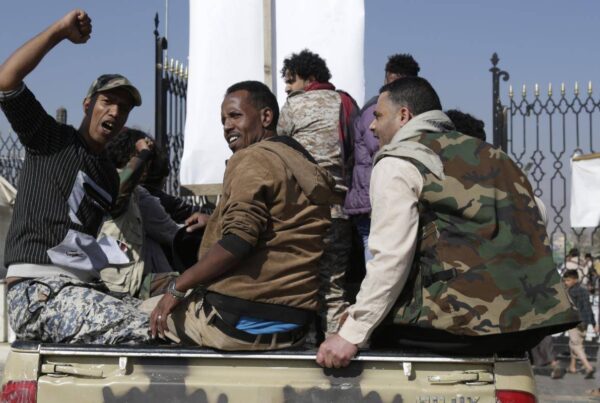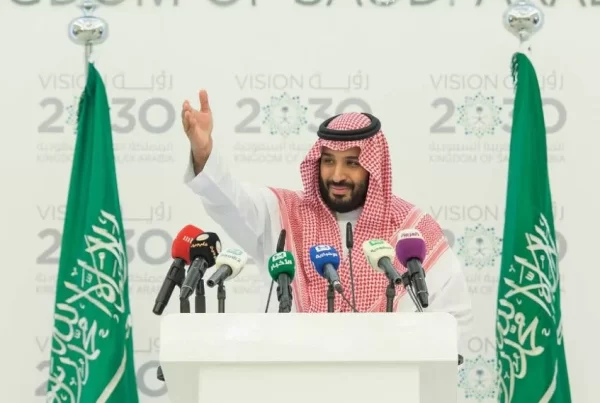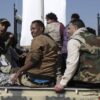A rushed and flawed national dialogue is setting Yemen up for more problems rather than finally solving them, writes Farea Al Muslimi.
More than a month ago, Yemen’s Conference of National Dialogue (NDC) ended, three months after its originally scheduled end. Aimed at solving the country’s critical problems and providing the elements of a new constitution, the conference was Yemen’s main political platform as part of the GCC-brokered deal. For nine months, 565 delegates from various political affiliations discussed the issues facing the country, including the Sadah War, the process of state building, transitional justice and, perhaps most importantly, the southern issue.
For years, the southern issue has been Yemen’s most critical political problem. With tensions threatening to divide Yemen into many Yemens, the working group tasked with dealing with the Southern issue was seen as the dialogue’s most intractable issue. Diagnosing the problem as mainly administrative, the conference presented federalism as the solution for the south.
But the NDC was divided about the number of regions. As usual, it delegated the challenge by establishing a committee to decide on the number of regions and their geographical borders. Later, the president appointed a committee of 21 individuals, headed by himself, to take on that task. Less than two weeks later, the committee’s work was over and it announced the new Yemen, dividing the country into six federal regions.
Delegating the president with the power to establish the committee and the outcomes of the committee was a reflection of the two most problematic legacies of governance and problem-solving that continue to strangle Yemen.
The first is deferring and delegating issues rather than resolving them. Instead of the NDC doing what it was essentially established to do, it delegated it to some other group, unconcerned about a potential violation of its bylaws. The NDC itself is a platform that came out of the legacy of deferring problems rather than solving them. The NDC has essentially put off Yemen’s problems and possible conflicts, but it has not resolved them. It has failed to address the roots of the problems that led to 2011 uprising.
The second legacy is that of addressing problems by creating new ones – or, at best, making the wrong diagnosis. The final outcome of the regional committee has planted seeds for new political, social and developmental problems.
Rushed by time, the committee’s work appears to be badly done. It violates its own by-laws that emphasis that the number, and type, of regions must be done based on many important criteria, including social cohesion, geographical closeness, developmental and economic goals and cultural and social similarities.
The final product violates most, if not all, of these indicators. First, and most dangerously, some regions have been reserved to a specific religious sect, marking the first time in Yemen’s history that an area has been officially designated to a sect.
There are also deep tensions between some provinces that have been lumped together, risking further heightening these tensions. This was true in the north and the south. In the former People’s Democratic Republic of Yemen, the provinces of Al Mahra and Hadhramout, which have long had toxic relations, were joined together. Another region lumped together a number southern provinces whose inhabitants fought each other in a series of historical conflicts.
In the north, geographical, religious and cultural factors appeared to be ignored. Since February, the capital has seen several protests by citizens of different regions demanding the division of the regions to be redone. Thousands of people hailing from the two districts of Wessab and Ottomah have conducted two protests in the last two weeks demanding to be part of the Tehama region rather than Azal region where they were placed. This is one of the clearest examples of the poor job the committee has done. Instead of being part of Tehama – some 18 kms away – it was placed with the Azal region, whose capital is more than 150 kilometres away. Most Wessabis head to places in the new Tehama region for business, education and medical and legal concerns.
But these problems are still not the main ones. To many power figures and entities within the southern movement, the GCC deal did not address the southern question, leading them to boycott the entire NDC process. It is, therefore, hard to imagine how such solution will be implemented peacefully in the south as voices opposed to unity continue to reject it, and reject the authority of the Yemeni government.
Even political parties who were members of the committee expressed their reservations regarding the final outcome before eventually opting to move forward out of fear of being criticised for hindering the resolution, which could incur sanctions against them according to the United Nations Security Council’s resolution on Yemen approved in February.
Behind doors, even those who were involved in the committee work complained of a rushed process.
“Trying to calm things in the south, we had to move quickly,” one member said, speaking on the condition of anonymity. “It’s a completely irrational division and doesn’t serve any developmental or social goals, but we had no choice. We are trying to absorb the rising anger in the south.”
Trying to calm down the southern movement, the committee engaged in hasty work that involves areas across Yemen. Still, it does have a chance to move things forward in a positive direction and revise its work. According to the NDC laws, the committee’s decisions have to be approved in the constitution and voted on in a public referendum in a later stage. But that’s less likely to happen as political leaders in Yemen can barely believe they are out debating some issues, and even if they don’t solve an issue, they would less likely be wanting to go back to discussing it again.
As Yemen tries hard to move forward, the tendency to delay and misdiagnose problems risks backfiring spectacularly. The extensive effort to calm the pain will only make the pain increase and spread even more.
Farea Al Muslimi is a Yemeni activist and writer
On Twitter: @Almuslimi







